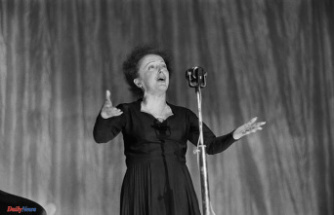For a long time, building societies were unregistered from financing customers. Now the tide is turning. In view of rising interest rates, the contracts of Wüstenrot and Co. suddenly look attractive again. But how does financing by savers compare to a classic bank loan?
The dry spell of German building societies lasted eight long years. Between 2012 and 2022, the interest on classic home savings loans was more expensive than ten-year bank loans with repayment. Their average interest rate was 1.74 percent on average, while building societies demanded an average interest rate of 2.57 percent over the same period.
Given this discrepancy, it is understandable that hardly anyone wanted to take out a home loan.
But times have changed. And thoroughly. Today, home savings costs an average of 1.89 percent, bank loans are twice as expensive at 3.90 percent. A good selling point for banks and intermediaries: Since no one knows how the interest rate market will develop, customers who are saving for a home savings contract today can be certain of the interest they will have to pay in ten to 15 years - and can use it to calculate their financing with certainty.
However, planning security and low interest rates are not available for free. If the financing is offered through an intermediary or consultant, they usually receive a commission of 1.5 to 2 percent from the banks and insurance companies. In addition, customers who conclude a home savings contract pay a closing fee of one, usually even 1.6 percent. With a building loan of 500,000 euros, that quickly adds up to 15,000 euros.
Due to the closing fee, customers start their home savings contract with a significant minus on their account. And since building society savings have low interest rates, the credit in some offers is still well below the amount paid in, even ten years after the conclusion of the contract.
However, the advantages of the home savings model become apparent after the allocation. If the home savings contract is allocated after ten to 15 years, the credit plus the home loan will pay back the entire bank loan. The customer then only has to repay the building society loan and benefits from the guaranteed low building society interest rate.
The repayment rate can be relatively steep depending on the selected tariff and savings period. However, in this model, customers do not have to fear a nasty interest rate surprise at the end of the fixed interest period, but can plan their financing reliably from the first to the last year. With an annuity loan, this is only possible with a very long fixed interest rate of 20 to 30 years (and at a slightly higher interest rate). The only alternative is the hope that after ten or 15 years interest rates will not be higher than they are today.
Because the two possible financing models - with and without a home savings contract - never have the same rate, term and interest rate security, customers often find it difficult to compare them. What if I pay less per month for a model but end up spending more? What is better? The interesting and also important question is now: Are home savings models cheaper overall than a comparable bank loan with repayment? Unfortunately, there is no clear answer to that. Because nobody knows how high the interest rates will be at the end of the fixed interest period of an annuity loan.
In recent years, FMH-Finanzberatung has analyzed many such offers with different calculations and Excel spreadsheets for their customers. Now the Frankfurt experts have had a computer programmed that calculates quickly and clearly which model is better. Both models are mathematically synchronized - the same rates and the same financing period. As a result, the interest rate is calculated that would have to apply to the follow-up loan for the bank loan so that both models cost the same. The fact that such a calculation is not quite simple is also shown by the fact that no such comparison has yet been offered on the Internet.
If you take the trouble to compare two models or offers, you want to get a clear result in the end. And that is mathematically possible if you deliver real numbers without any sales interests. This is what FMH does and uses the computer to enable customers to make well-informed decisions. Anyone who believes that the interest rates will be higher than the calculated interest rate at the end of the fixed interest rate period will find it worthwhile to opt for the safe building savings option - and vice versa.
Because only one calculation is made and no personal data is requested, the tool costs a small fee. A comparison with calculation of the marginal interest rate costs EUR 6.99 and can be paid by PayPal or credit card. Important: The calculator does not make any recommendations, but only compares two offers. Even if you have several offers calculated, you usually make a good deal with it: the decision for the cheaper financing offer quickly saves a five-digit sum over the years.
Max Herbst is the owner of FMH Finanzberatung, which has been providing independent interest rate information since 1986.












